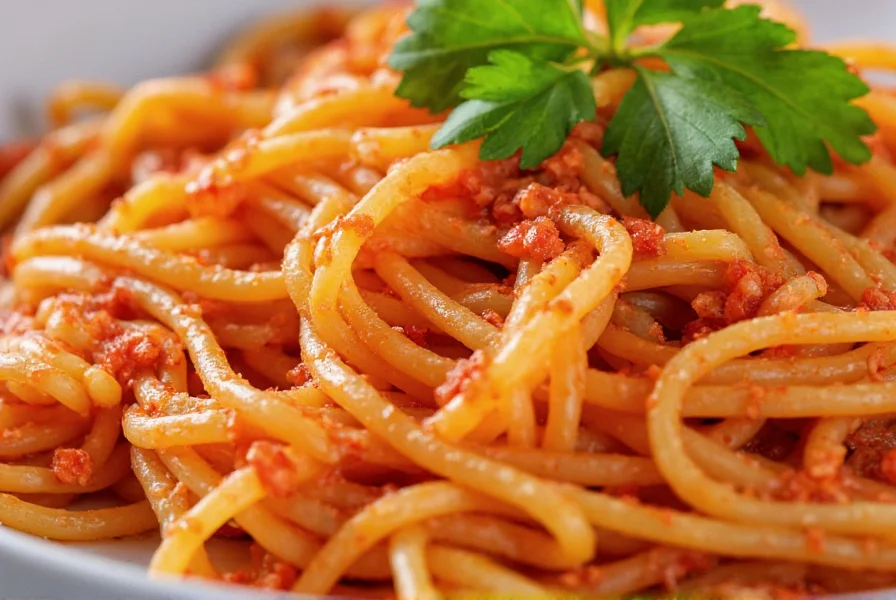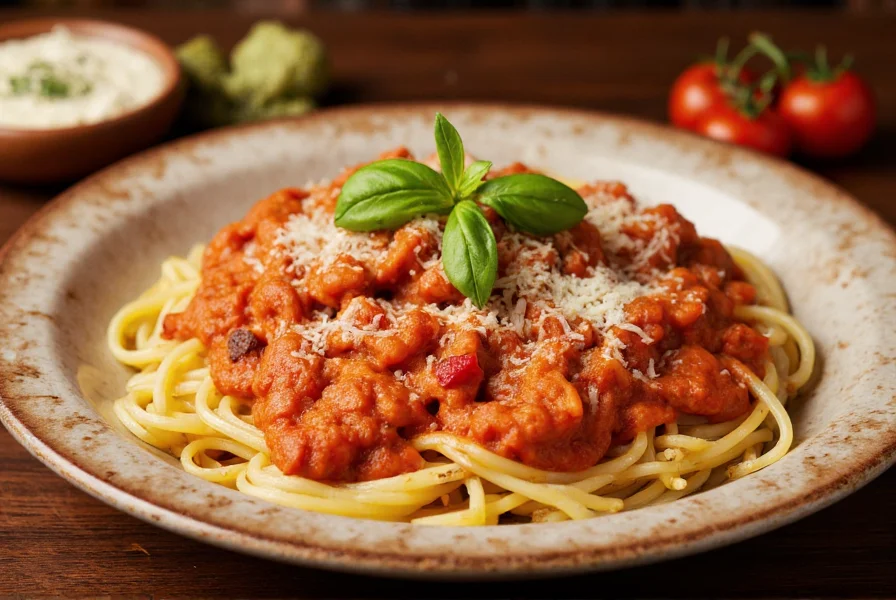When exploring chili and pasta pairing techniques, understanding the science behind this match elevates your cooking. Capsaicin, the compound responsible for chili heat, binds with fat molecules, which is why olive oil-based pasta sauces effectively distribute and mellow the spice. The starch in pasta also helps absorb and balance chili's intensity, creating a harmonious dish rather than overwhelming heat.
The Culinary Science Behind Chili-Pasta Harmony
Successful spicy pasta dishes with chili peppers depend on understanding how different chili varieties interact with pasta. Fresh chilies like jalapeños provide bright, grassy heat that works well with lighter pasta shapes, while dried chilies such as guindilla or peperoncino offer deeper, smokier notes perfect for heartier dishes. The key is matching chili intensity to pasta shape—delicate strands like angel hair suit milder chili infusions, while robust tubes like rigatoni stand up to fiery sauces.

Classic Arrabbiata: Italy's Fiery Pasta Tradition
Originating in Rome, authentic arrabbiata pasta recipe demonstrates the perfect chili-pasta marriage. The name "arrabbiata" (meaning "angry" in Italian) refers to the sauce's spicy character. Traditional preparation uses:
| Ingredient | Quantity | Preparation Notes |
|---|---|---|
| Dried red chili flakes | 1-2 tsp | Use Calabrian chilies for authentic flavor |
| Extra virgin olive oil | 3 tbsp | Essential for distributing capsaicin evenly |
| Canned San Marzano tomatoes | 400g | High quality for balanced acidity |
| Garlic | 2 cloves | Lightly crushed, not minced |
| Dried spaghetti | 400g | Preferably bronze-die extruded |
Step-by-Step Arrabbiata Preparation
Mastering how to balance heat in chili pasta recipes requires precise technique:
- Heat olive oil gently, adding chili flakes and garlic until fragrant (not browned)
- Add tomatoes slowly to prevent splattering, simmering for 15-20 minutes
- Cook pasta al dente in well-salted water
- Reserve 1 cup pasta water before draining
- Finish cooking pasta in sauce, adding splashes of starchy water to emulsify
- Remove garlic cloves before serving
- Toss with fresh parsley and high-quality pecorino
Variations Across Global Cuisines
Beyond Italian traditions, chili and pasta pairing techniques appear worldwide. Mexican cooks incorporate chipotle peppers into macaroni salads, while Asian fusion chefs use Thai bird chilies with udon noodles. For those seeking mild chili pasta for kids, consider:
- Removing chili seeds and membranes where most capsaicin resides
- Adding dairy elements like ricotta or cream to neutralize heat
- Using sweet paprika alongside small amounts of chili for flavor without intense heat
- Preparing a base sauce without chili, then offering chili oil on the side
Ingredient Selection Guide
Choosing the right components makes all the difference in best chili varieties for pasta dishes. Consider these pairings:
- For delicate pastas: Fresno or serrano chilies (medium heat, fruity notes)
- For hearty shapes: Habanero or Scotch bonnet (use sparingly for tropical heat)
- For authentic Italian: Calabrian chilies or peperoncino (smoky, moderate heat)
- For smoky depth: Chipotle peppers in adobo sauce (reconstitute with pasta water)

Avoiding Common Mistakes
Many home cooks struggle with chili pasta storage and reheating tips because they overlook key principles:
- Overheating chilies: High heat degrades capsaicin quality—always bloom chilies in warm oil
- Adding chili too late: Early incorporation allows flavors to meld properly
- Ignoring pasta water: The starchy liquid is crucial for sauce emulsification
- Using pre-made chili oil: Freshly infused oil provides superior flavor control
Dietary Adaptations
Modern interpretations of gluten-free chili pasta options maintain flavor integrity while accommodating dietary needs:
- Use 100% bronze-die extruded gluten-free pasta for better sauce adherence
- Add xanthan gum (1/8 tsp per serving) to prevent sauce separation
- Choose heartier gluten-free shapes like penne or fusilli
- For vegan versions, replace cheese with nutritional yeast and toasted walnuts
Serving Wisdom
The final touch in perfecting chili and pasta pairing techniques involves thoughtful presentation:
- Serve immediately—chili heat intensifies as dishes cool
- Offer cooling accompaniments: fresh mozzarella, avocado slices, or cucumber salad
- Pair with medium-bodied red wines like Chianti that complement without overwhelming
- For beer pairings, choose malty ambers that balance the heat
Frequently Asked Questions
Can I make chili pasta dishes ahead of time?
Yes, but with important caveats. Prepare the sauce separately and store for up to 3 days. Cook pasta fresh when serving, then combine with reheated sauce. Chili heat intensifies over time, so reduce initial chili by 25% if planning to store. Never combine cooked pasta with sauce before storage, as it becomes mushy.
What's the best way to reduce heat in an over-spicy chili pasta?
The most effective method is adding dairy—stir in 2-3 tablespoons of whole milk, cream, or mascarpone cheese. Acid also helps balance heat; try a splash of lemon juice or balsamic vinegar. Never add water, as it dilutes flavor without reducing capsaicin. For immediate relief while eating, serve with plain yogurt or fresh mozzarella.
Which pasta shapes work best with chili-based sauces?
Rough-textured pastas with ridges or holes capture chili sauces best. Opt for rigatoni, penne rigate, or cavatelli for robust chili dishes. For lighter chili infusions, choose spaghetti or linguine. Avoid very delicate shapes like capellini with spicy sauces, as they can't support the flavor intensity. Bronze-die extruded pastas provide superior sauce adhesion due to their rougher surface.
How do I prevent chili oil from separating in pasta dishes?
The key is emulsification. Always finish cooking pasta in the sauce using reserved starchy pasta water (about 1/4 cup per serving). The starch acts as an emulsifier, binding the oil-based chili elements with the aqueous components. Add pasta water gradually while vigorously tossing. Using extra virgin olive oil (which contains natural emulsifiers) rather than neutral oils also helps maintain sauce cohesion.
Can I use fresh chili peppers instead of dried in pasta sauces?
Absolutely, and fresh chilies offer different flavor profiles. For fresh chilies, remove seeds and membranes (where most heat resides), then finely mince or slice. Add early in cooking to mellow the raw heat. Fresh jalapeños, serranos, or Fresno chilies work well. Note that fresh chilies provide brighter, grassier notes while dried chilies offer deeper, smokier flavors—choose based on your desired profile.











 浙公网安备
33010002000092号
浙公网安备
33010002000092号 浙B2-20120091-4
浙B2-20120091-4